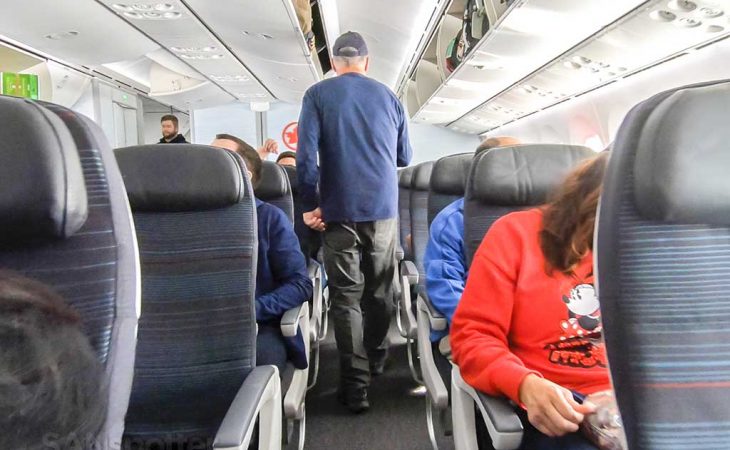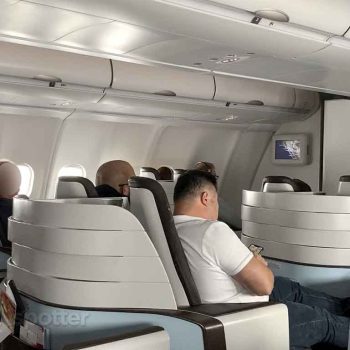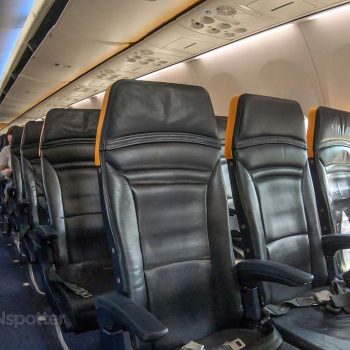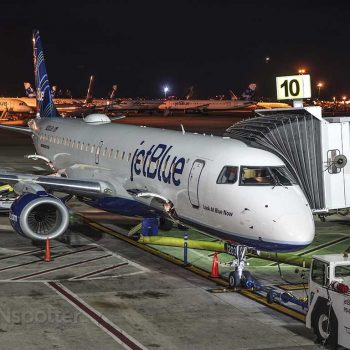It wasn’t all that long ago that a WestJet vs Air Canada comparison such as this would have been incredibly tedious to write. Thankfully, these two airlines are more similar than they are different these days, and I didn’t lose my sanity putting this together.
That’s not to say that you’ll get the same experience on each. Both Air Canada and WestJet approach everything just a little bit differently than the other, and this in-depth comparison will expose everything to help you choose the one that’s right for you.
And I promise not to use the “eh” expression beyond this point…
WestJet vs Air Canada: a brief summary of all the similarities and differences
Air Canada and WestJet are very different airlines, but that doesn’t stop them from trying to put each other out of business. If you don’t believe me, ask the CEO of either one, and they’ll tell you that they are “proud to be Canada’s #1 airline.” See how confusing this is?
Similarities
- Both airlines have a very strong domestic route network and can get you pretty much anywhere you need to go in Canada.
- Both Air Canada and WestJet serve a large number of destinations in the United States.
- Both airlines use the Boeing 787 for long haul international routes. It’s the only international long haul aircraft type for WestJet, but Air Canada has other types in their fleet.
- Both airlines feature a fairly decent long-haul business class product. But remember: the WestJet long-haul international route network is rather limited compared to Air Canada.
Differences
- Air Canada is a much larger airline than WestJet. At the time of this writing, Air Canada has a fleet of 160 aircraft serving 222 destinations. In comparison, WestJet has a fleet of 110 aircraft serving 100 destinations.
- WestJet is primarily a Canadian domestic airline, whereas Air Canada is considered a global airline.
- Air Canada has fairly thorough coverage of lower Canada from coast to coast. WestJet, on the other hand, is more heavily established in Western Canada (hence the name).
- Air Canada is part of a major global airline alliance (Star Alliance). WestJet is not.
- Air Canada has a vastly superior international route network.
An oversimplified history of both airlines
Air Canada is much older than WestJet. They have very different histories, but both were built from the ground up to be Canada’s national airline. Air Canada seems to be winning that competition at the moment, but WestJet has been starting to give them a run for thier money.
A brief history of WestJet
Founded in 1996, WestJet was originally based in western Canada as a domestic airline. In 2004, they introduced flights to the United States. Ten years later, in 2014, WestJet introduced flights to Ireland and England. They are still expanding in Europe.
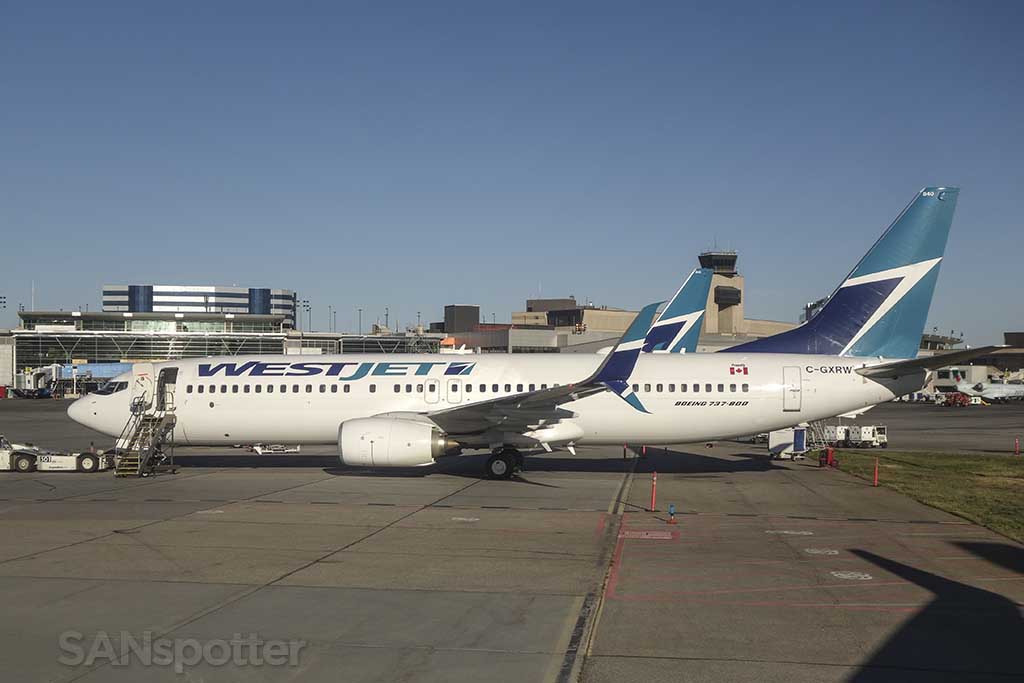
They fly over 20 million guests a year and continue to grow (much to the frustration of Air Canada).
A brief history of Air Canada
Air Canada was founded in 1937. The company had a monopoly on Canadian air routes until business restrictions required them to cooperate with other airlines. With headquarters in Montreal, Air Canada introduced flights to cities around the world by the early twenty-first century.
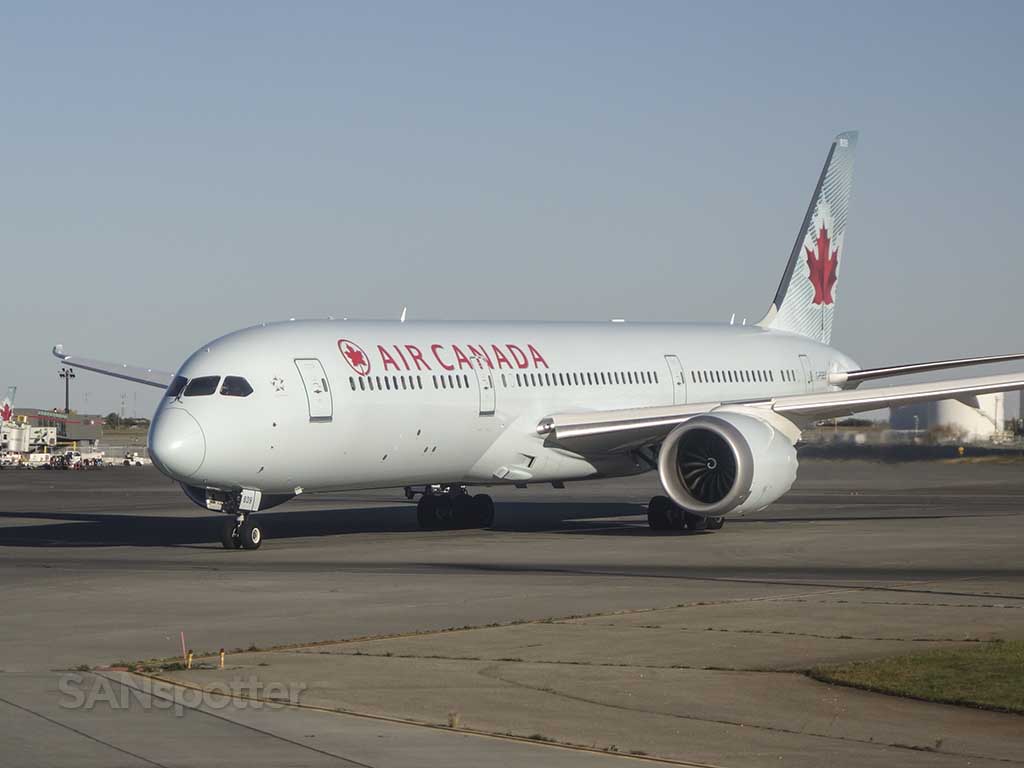
In 2000, the company merged with Canadian Airlines International to become the largest commercial airline in Canada, and one of the largest in the world. Air Canada is significantly older and larger than WestJet and serves many more destinations domestically and abroad.
WestJet seats vs Air Canada seats
The good news is that there’s really not all that much difference between the seats on WestJet and Air Canada. Choosing one of these two airlines based on the seats alone isn’t worth it, since neither one of them outshine the other. If I’d had to pick one though, I’d go with Air Canada. Their business class seat is slightly better.
WestJet seats
WestJet seats, like any other airline, vary in seat width, pitch (leg room), and the amount you can recline. WestJet has only five different aircraft types, so there isn’t a large variety when it comes to seats.
1. International business class
WestJet international business class seats are the largest in the fleet, and they are competitive with Air Canada business class seats. They have a pitch of 46 inches and a width of 21 inches – and they look (and feel) fantastic.
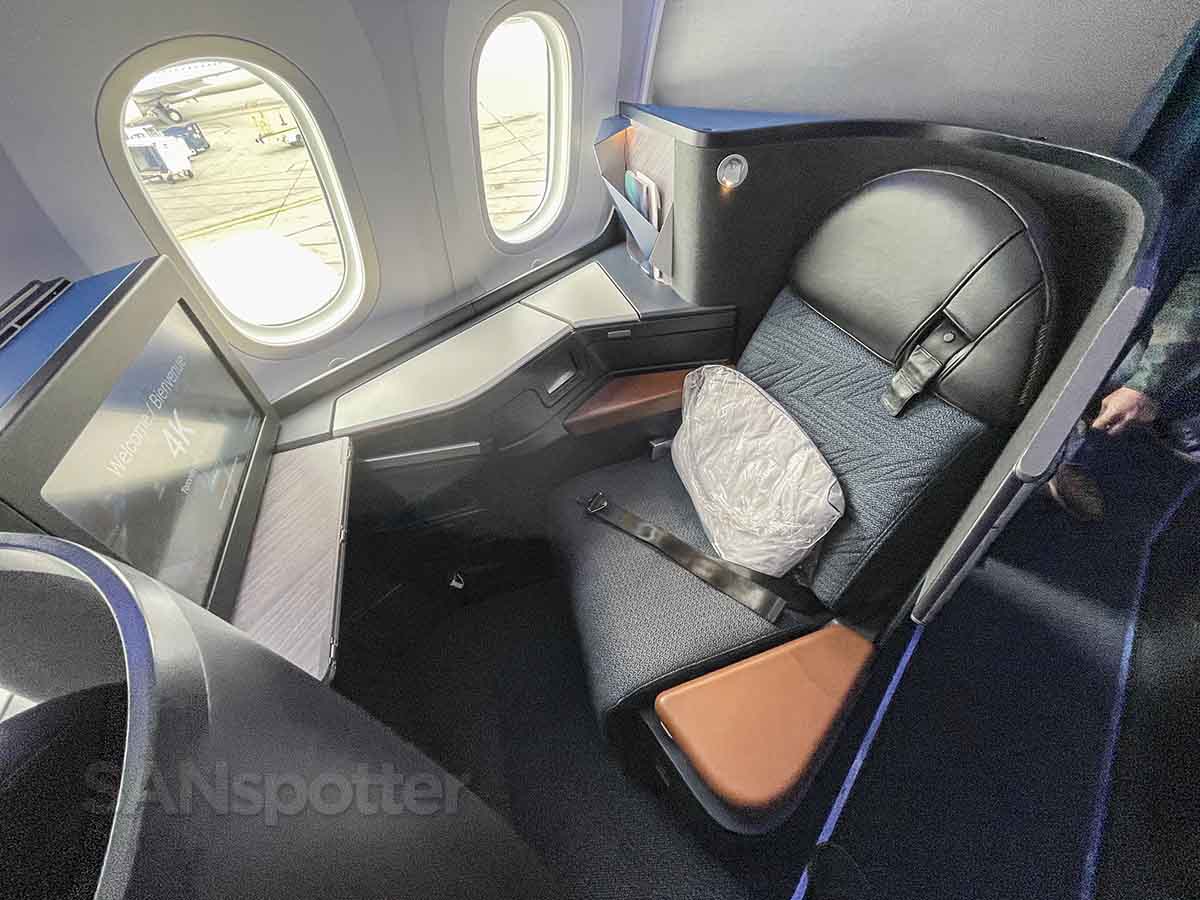
2. International premium economy
International premium economy seats are wider and have more pitch than regular economy seats. They are 19 inches wide with a 38-inch pitch. There’s a lot of legroom in these seats!
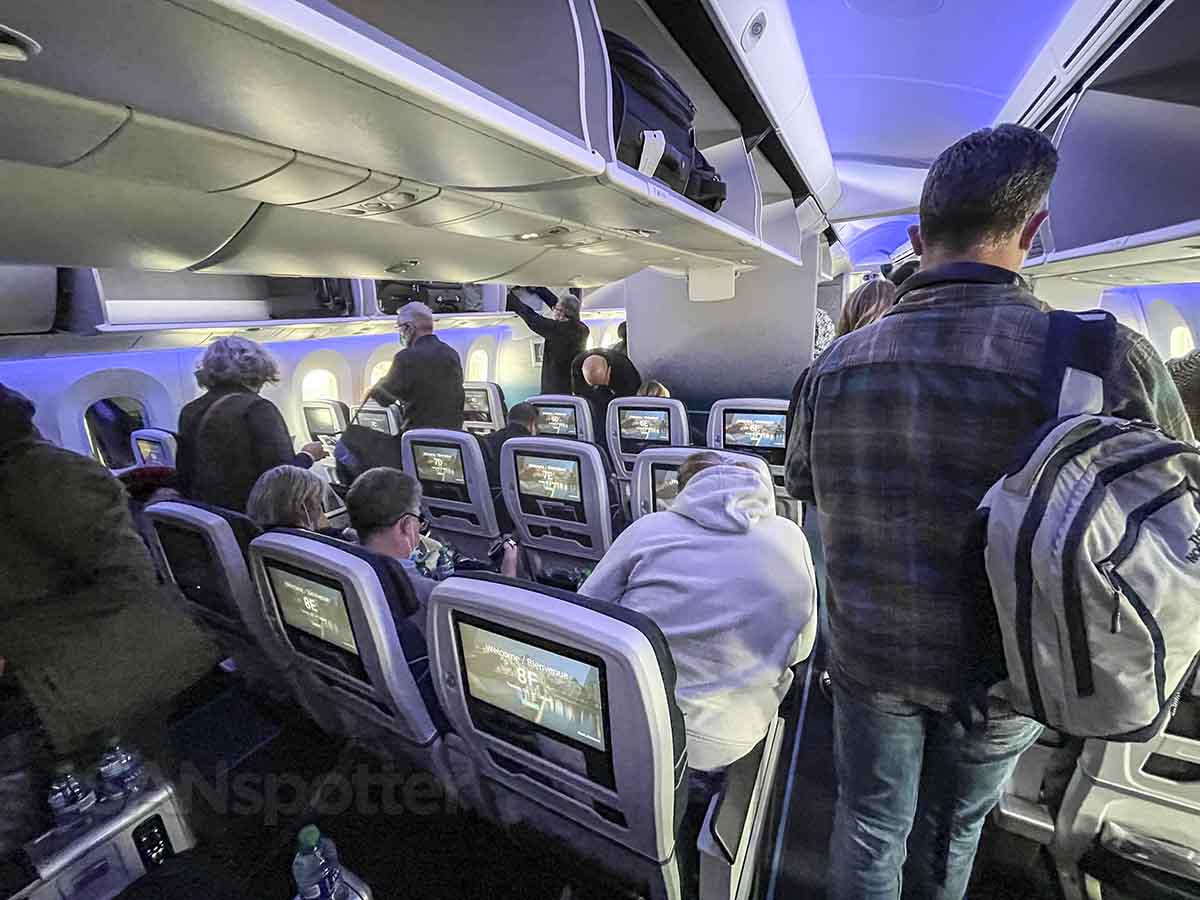
3. International economy
The WestJet international economy seats are 17.5 inches wide. They have a pitch of 31-35 inches, depending on the seat location. Try for a bulkhead seat (or an exit row) if you want an international economy seat with nearly unlimited leg room.
4. Domestic premium seats
Domestic premium seats are 17-20 inches wide with 38 inches of pitch. Of course, it will vary slightly based on aircraft type, but since the 737 is the primary domestic aircraft for WestJet, you can expect a fairly consistent seat between flights.
5. Domestic economy
WestJet domestic economy seats are 17.3 inches wide with a pitch of 31 inches. This is the smallest seat in the WestJet fleet. Spoiler alert: I didn’t have many good things to say about these seats in my WestJet 737-800 economy review.
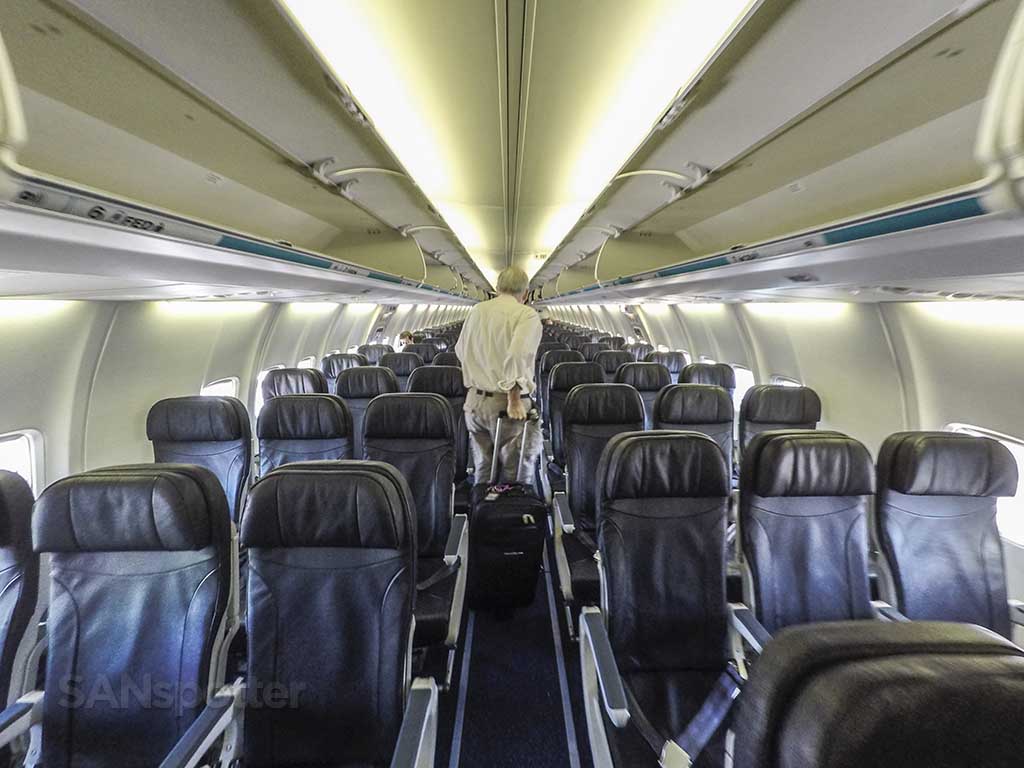
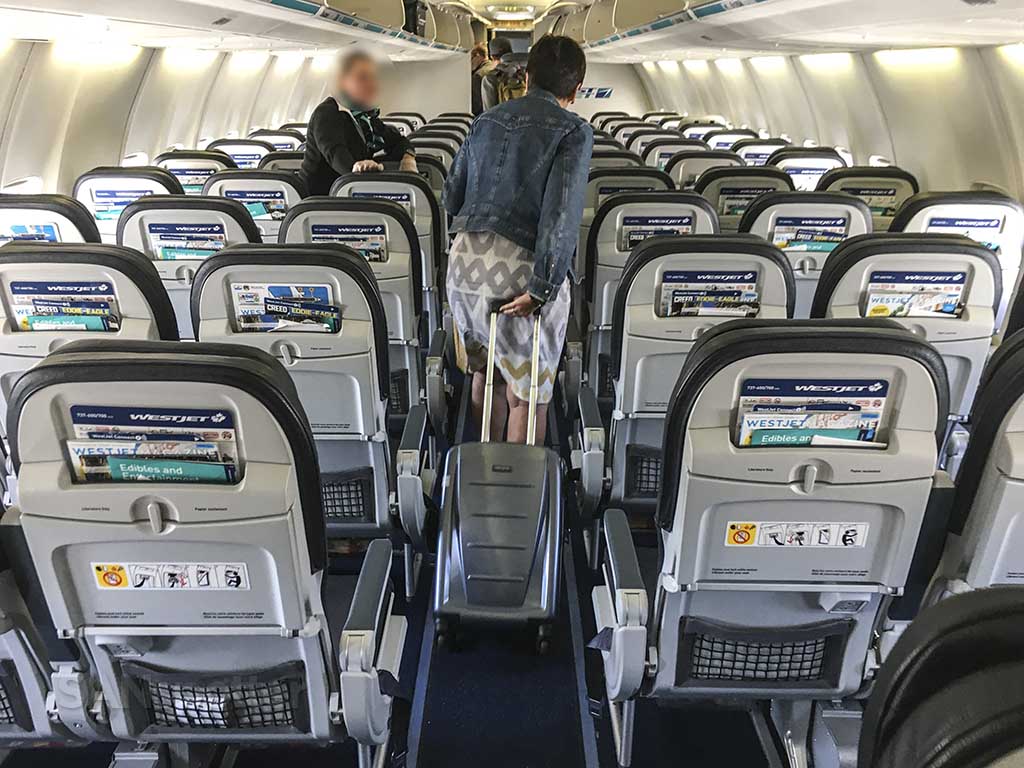
Air Canada seats
Just as it is on WestJet, the seats on Air Canada vary in width and pitch according to price. In my experience, the seats aren’t any better (or worse). Sorry for being so vague, but it is what it is.
1. International business class
Although they are just 21 inches wide, international business class seats have a pitch of up to 50 inches (depending on aircraft type).
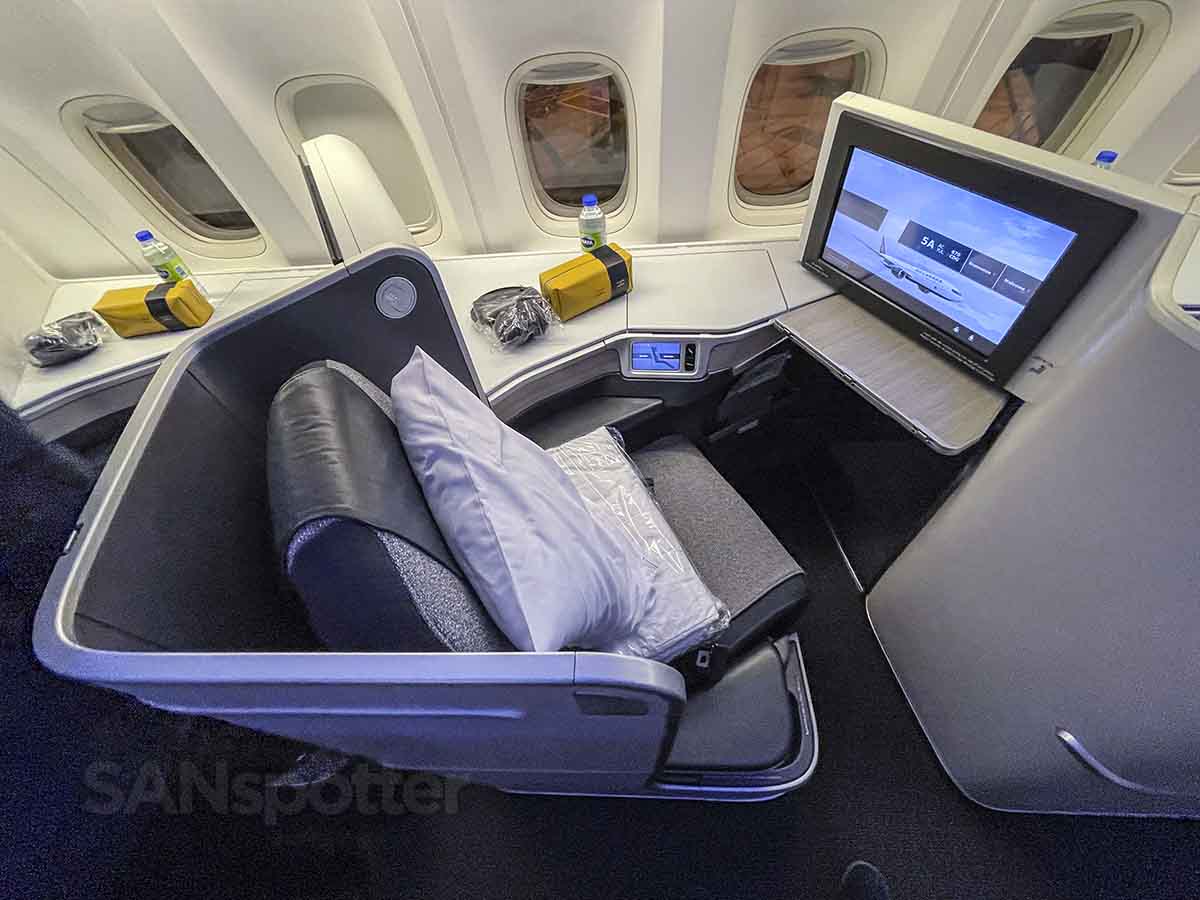
2. International premium economy
Air Canada’s international premium economy seats are 18-20 inches wide, depending on the aircraft type. The seat pitch averages 38 inches – which is the same as what you’ll get on WestJet.
3. International economy
International economy seats on Air Canada are slightly larger than domestic economy seats. The width is 17.3 inches with 30-34 inches of pitch.
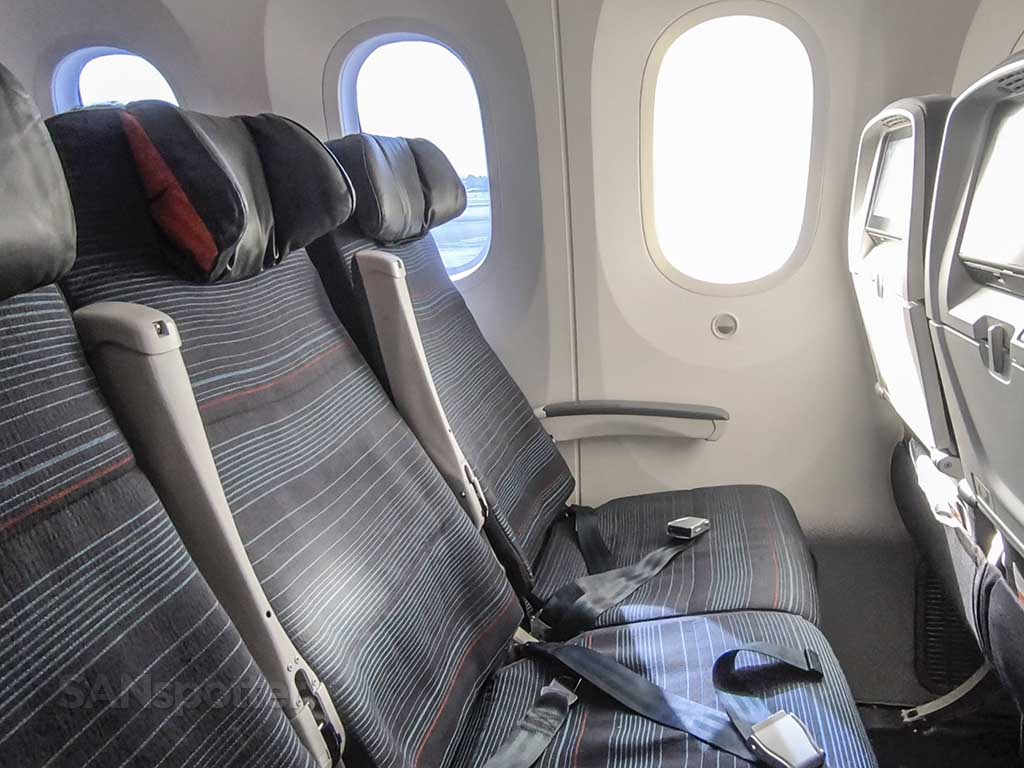
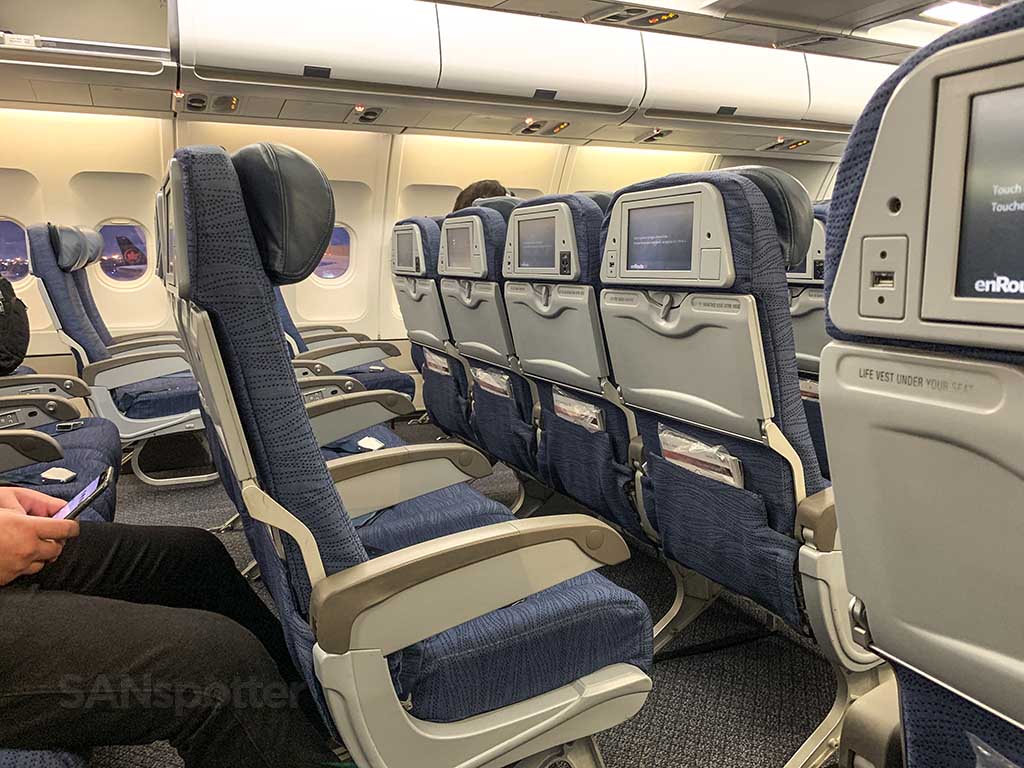
4. Domestic business class seats
Domestic business class seats on Air Canada are 21 inches wide and have a pitch of 35-38 inches (depending on the aircraft type). Note that there are two different versions of these seats flying around at the moment – newer aircraft have the best seats.
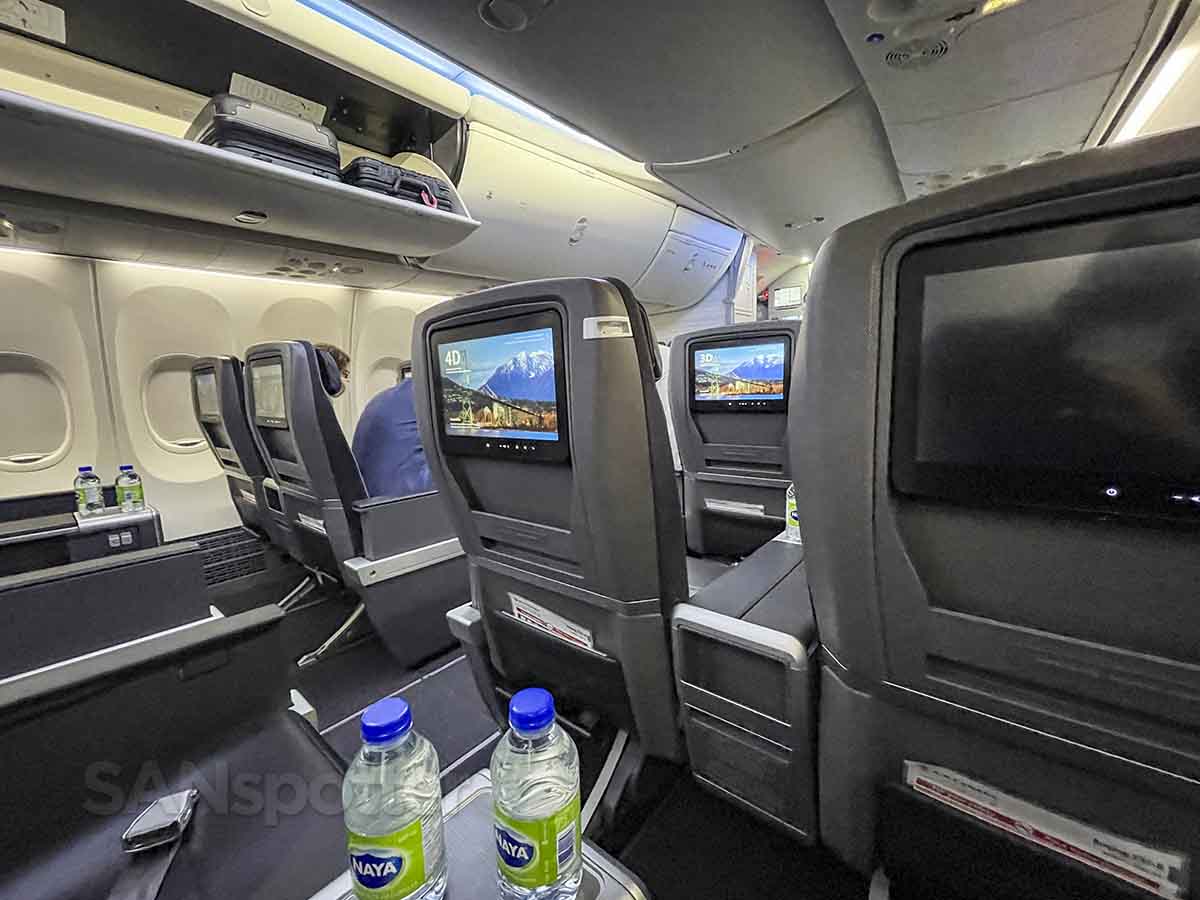
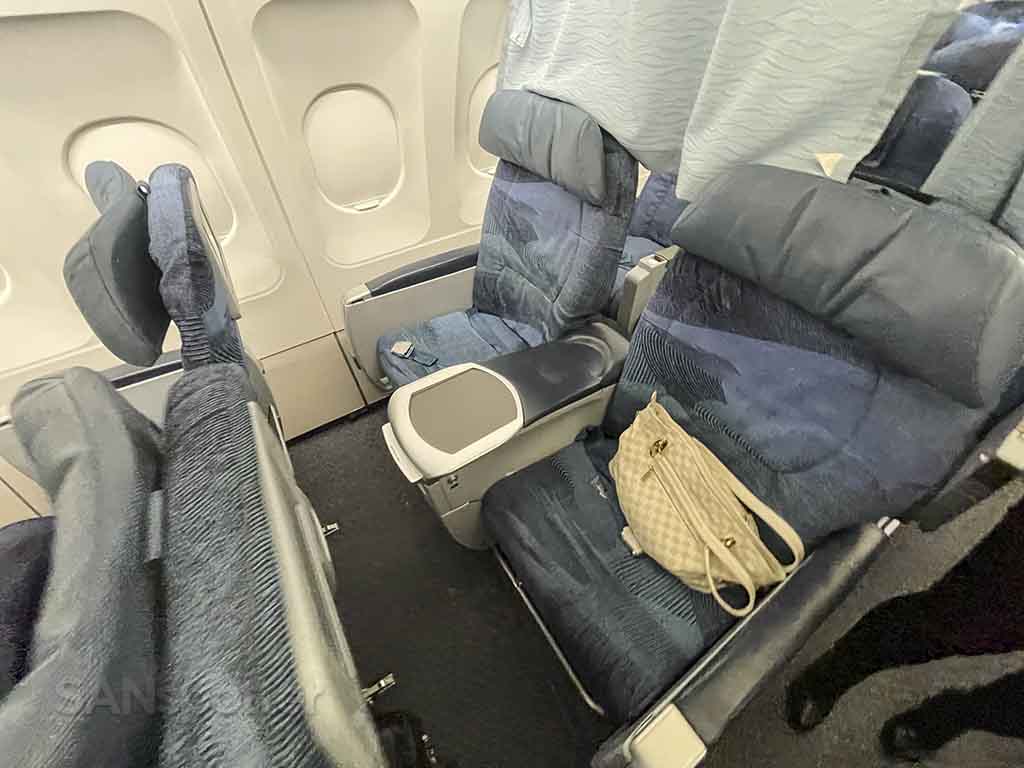
5. Domestic premium economy
Similar to WestJet, the domestic premium economy seats on Air Canada (known as the “Preferred” seats) are standard economy class seats with a bit of extra leg room. It’s worth it if you can score one of them for a decent price.
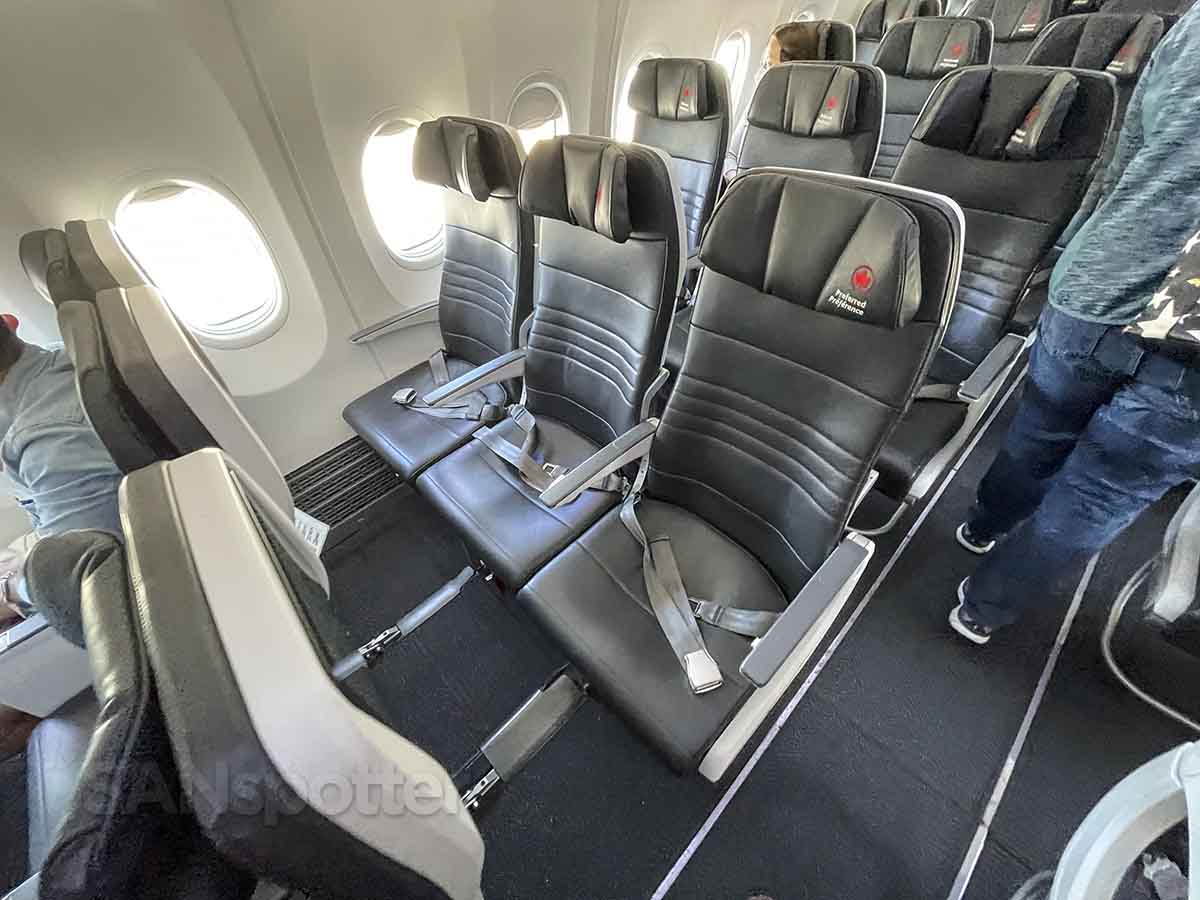
6. Domestic economy
Domestic economy seats are a standard 17 inches in width and with a 31 pitch. It’s the smallest seat in the fleet, and is generally the least expensive option.
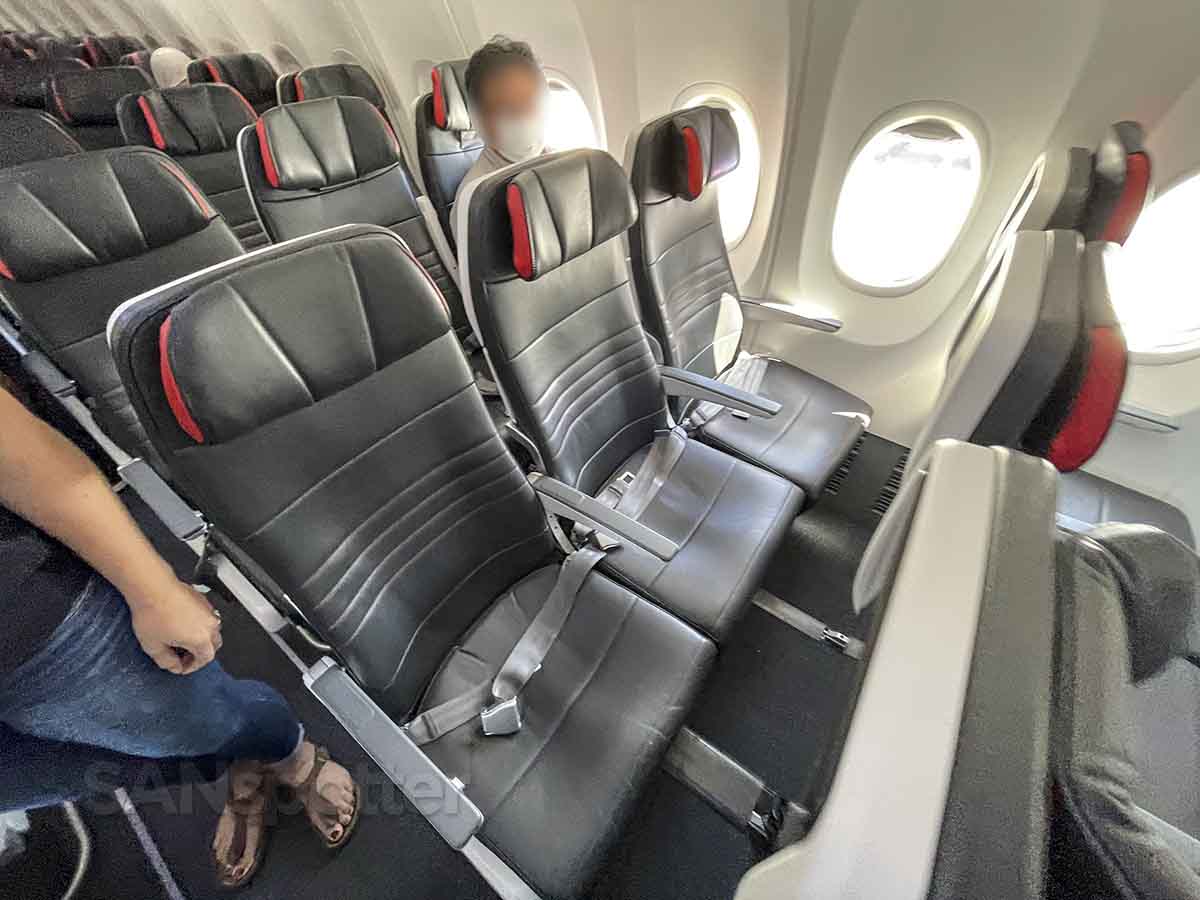
WestJet food vs Air Canada food
It’s getting to the point now where talking about food on airplanes is becoming difficult. Remember when airlines used to serve hot meals in economy class? On 2-hour domestic flights?
Sadly, this portion of this WestJet vs Air Canada comparison will have you reminiscing of the good ‘ol days with clenched fists and filthy words (just as how your grandparents let off steam when they’re drunk).
WestJet food
WestJet offers a variety of meals and snacks for free, as well as a food for purchase option on most flights. For flights with a meal service, you can call ahead and request a special meal for any specific dietary needs.
1. International business class
As you would expect, business class has the best food options (yes, WestJet does serve decent food on longer flights). You’ll get a complimentary pre-flight beverage, a multi-course meal with alcohol, and exclusive snacks reserved only for business class passengers.
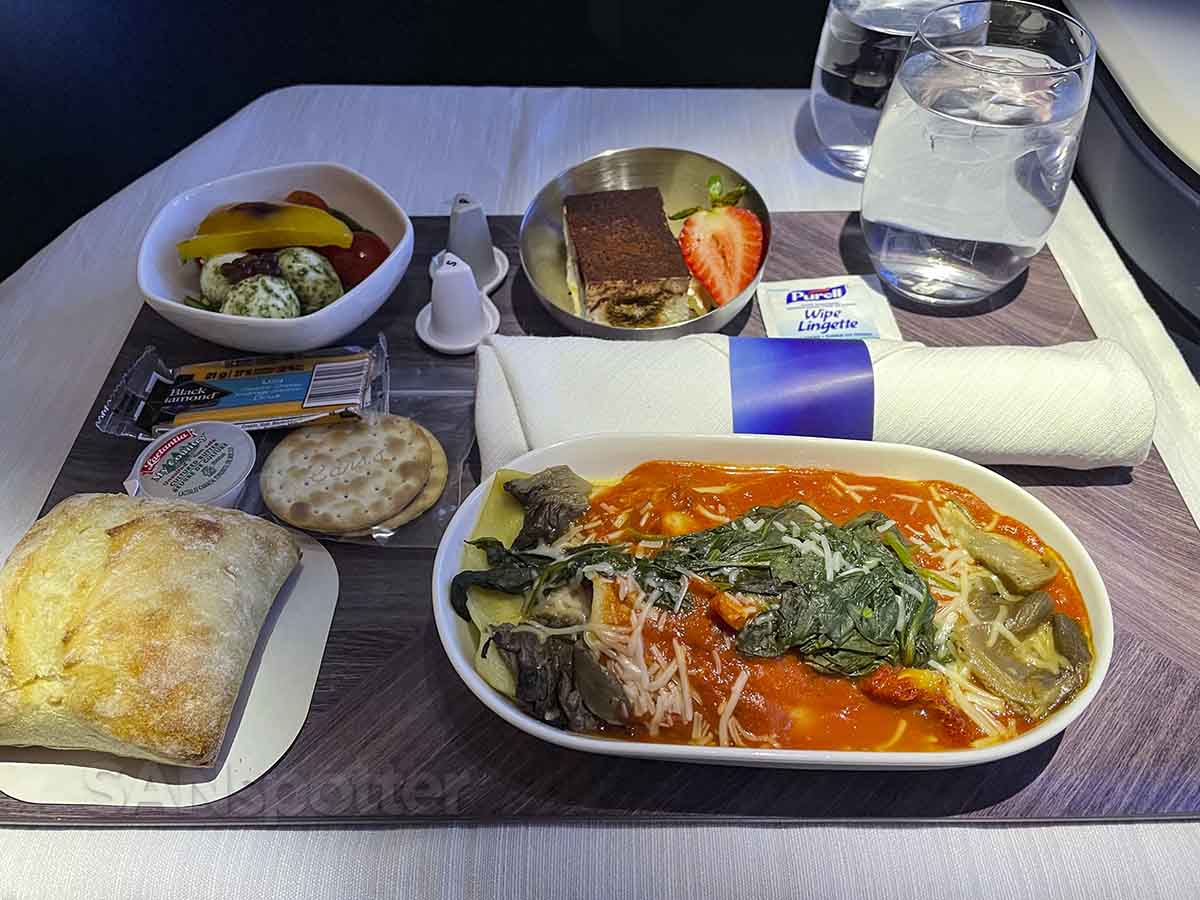
2. International premium economy
International premium economy offers the same food as domestic premium class, usually with second free meal served just prior to landing. Alcohol is available for purchase.
3. International economy
On overnight flights, WestJet offers one to two free meals in addition to the usual snacks (depending on the length of the flight). Additional items are available for purchase.
4. Domestic premium class
For WestJet premium passengers, a full meal is available for free (as is complimentary beer and wine). Additional meals and snacks can be purchased separately.
5. Domestic economy
WestJet has (finally) upgraded from peanuts to a spicy snack mix on most domestic economy flights. Their snacks are free, as are an assortment of beverages. Premium snacks are available for purchase.
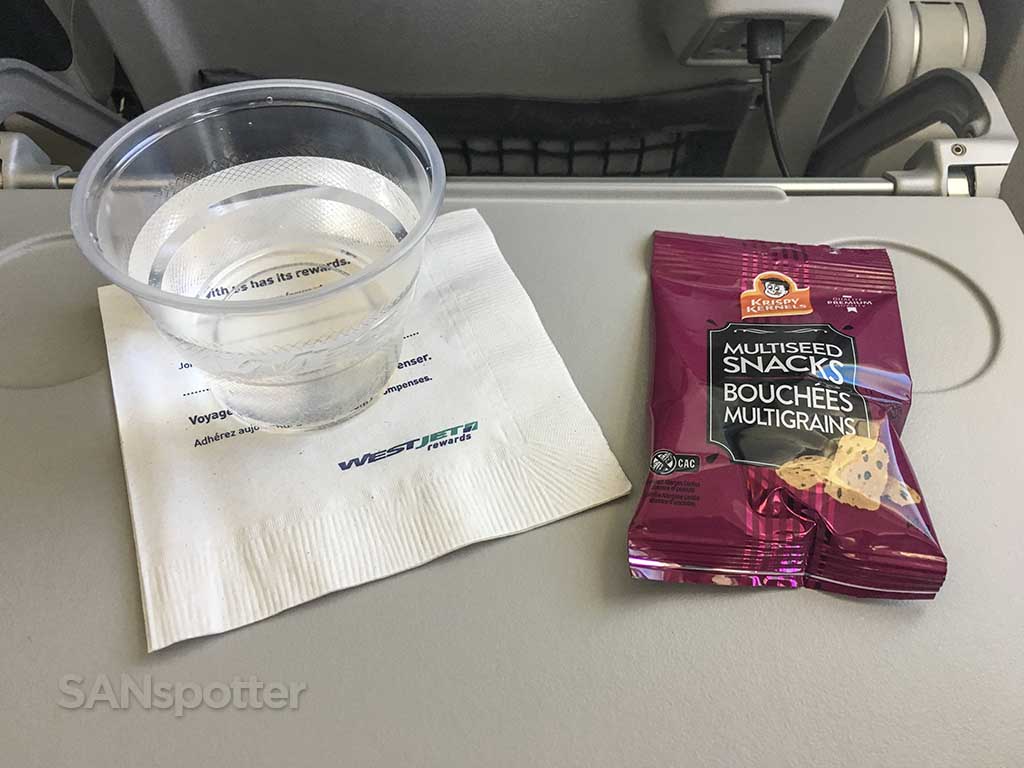
Air Canada food
Air Canada has a broader range of meals and snacks, as you might expect since they are a larger airline with more long-distance and overnight flights. Their meal service is called Air Canada Bistro and is available for purchase on any flight that doesn’t start after 10 pm.
1. International business class
Business class, whether international or domestic, comes with a complimentary hot meal on flights over two hours. If the flight is longer (or starts later in the evening), they offer a cold plate of snacks, followed a full meal. Alcoholic drinks are complimentary.

Specific overnight routes (including routes to Asia and the Middle East) offer on-demand, chef-curated menus. And from what I hear, they’re all pretty darn good.
2. International premium economy
International premium economy features a free meal, as well as a good selection of beer and wine options. Snacks are free (of course).
3. International economy
International overseas flights offer complimentary snacks and drinks, and full meals. However, it’s important to note that economy flights to North or Central America do not offer free meals (even though they’re technically international). You can always purchase meals via Air Canada Bistro if you just can’t wait.
4. Domestic business class
Domestic business class food is a lot better than what you’ll get in domestic economy (you’ll essentially have the option for fresh food and full meals on flights longer than two hours). On shorter flights, they’ll offer complimentary drinks and a small snack pack, with more substantial snacks available for purchase.
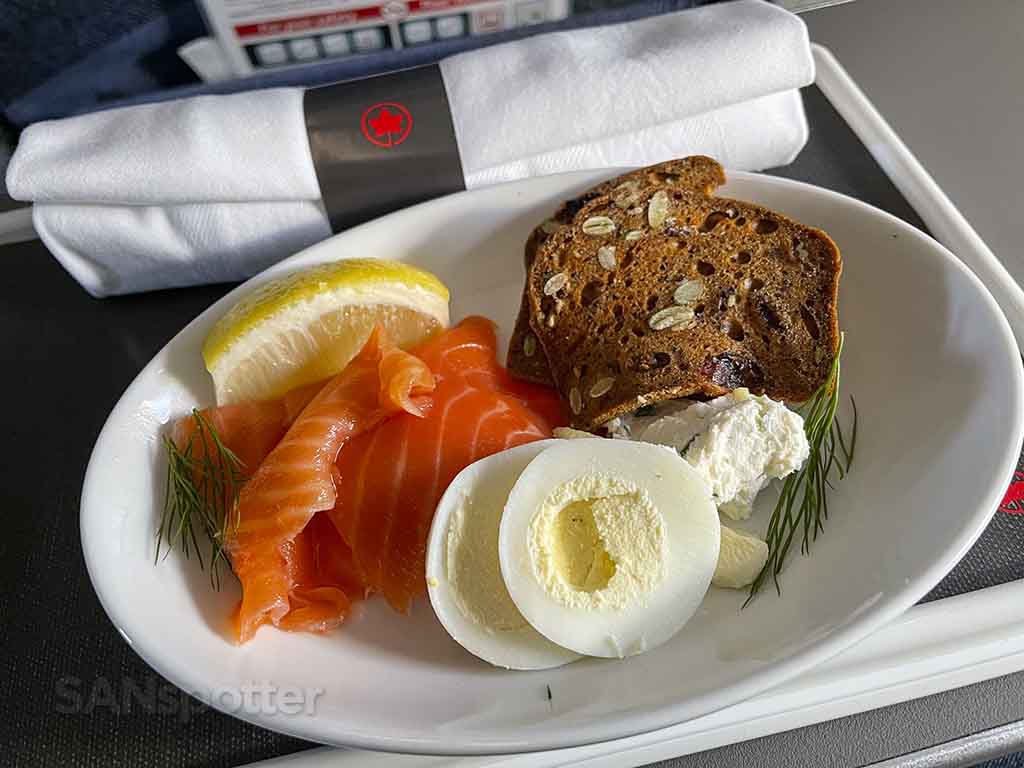
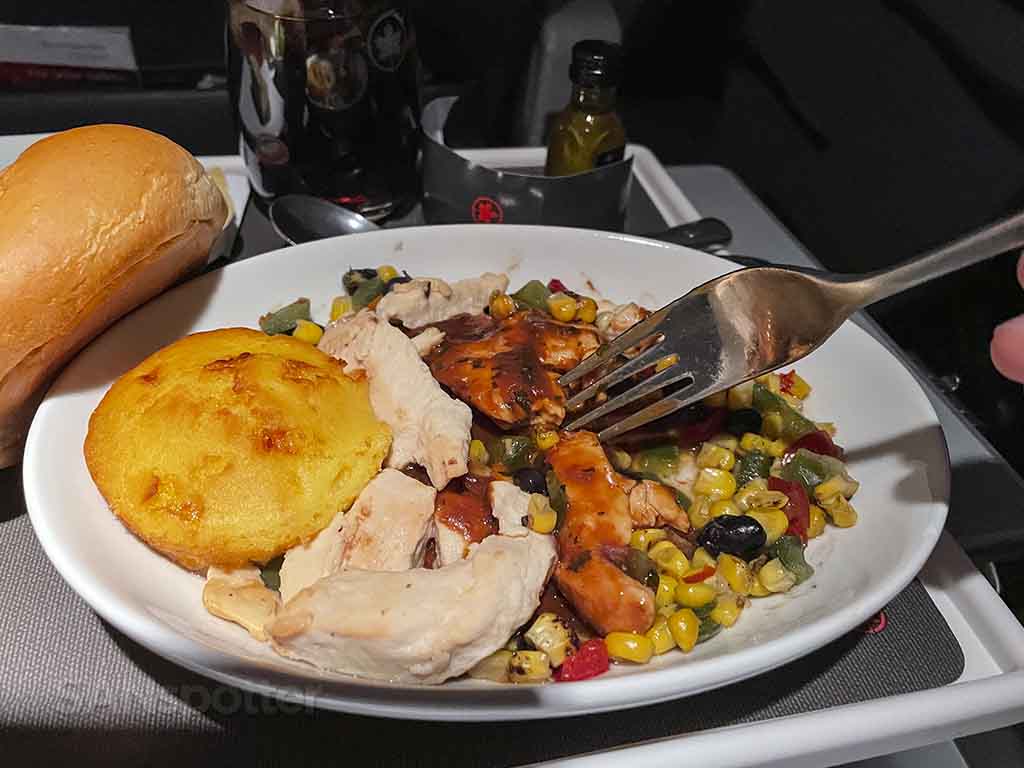
5. Domestic economy
Domestic economy flights don’t offer free meals, although they are available for purchase on longer flights. There are free snacks and drinks, as is standard with domestic economy flights on WestJet.
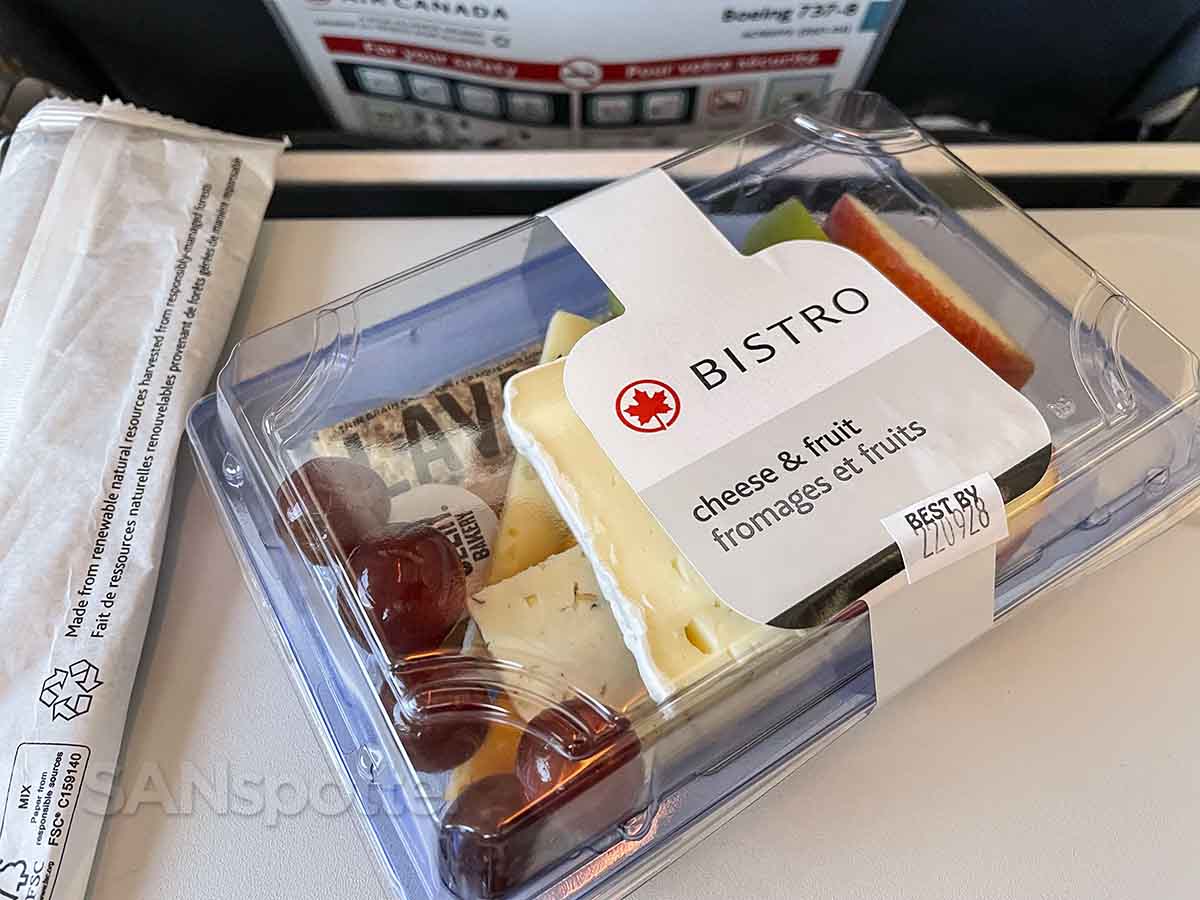
Comparing WestJet and Air Canada in-flight entertainment
Comparing the in-flight entertainment on both Air Canada and WestJet isn’t all that difficult. Both airlines offer fairly decent entertainment options, and you won’t go bored choosing one over the other. If I had to pick one entertainment offering over the other, I’d choose Air Canada.
WestJet in-flight entertainment
Although quite good, WestJet’s in-flight entertainment is lacking compared to Air Canada. They offer a streaming in-flight entertainment product on most of their flights, but it’s sometimes out of service on older aircraft.
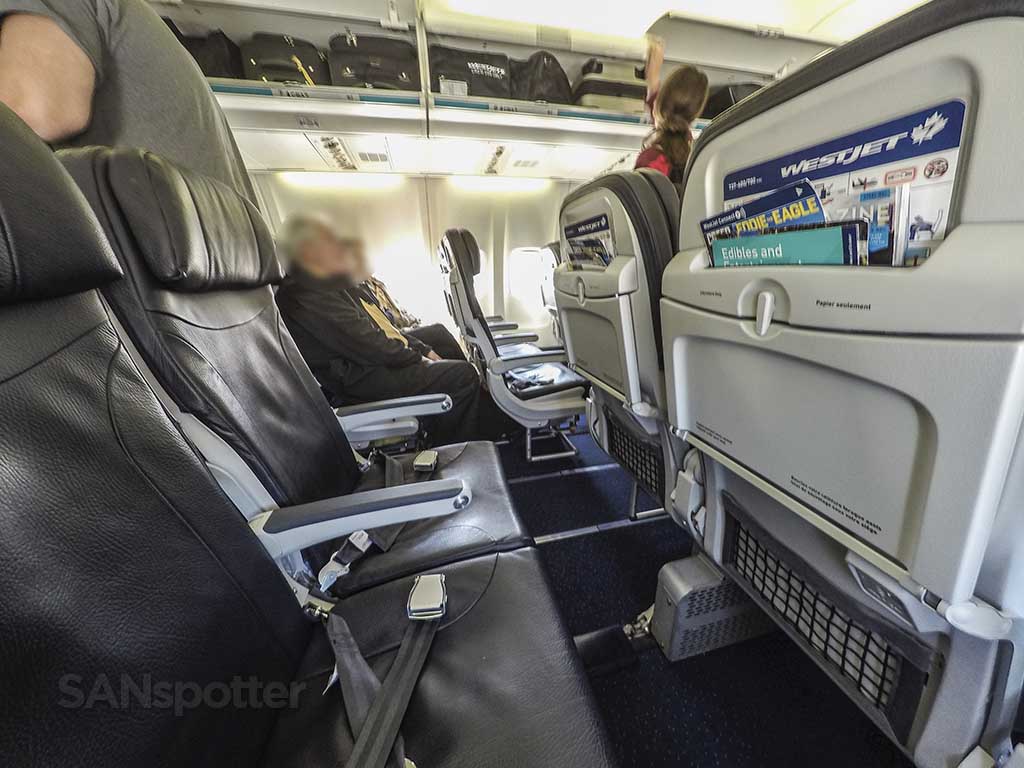
The WestJet streaming entertainment option offers a selection of movies and TV shows, as well as a number of music channels. There are power outlets at every seat, and they offer internet on board (WiFi) for a fee.
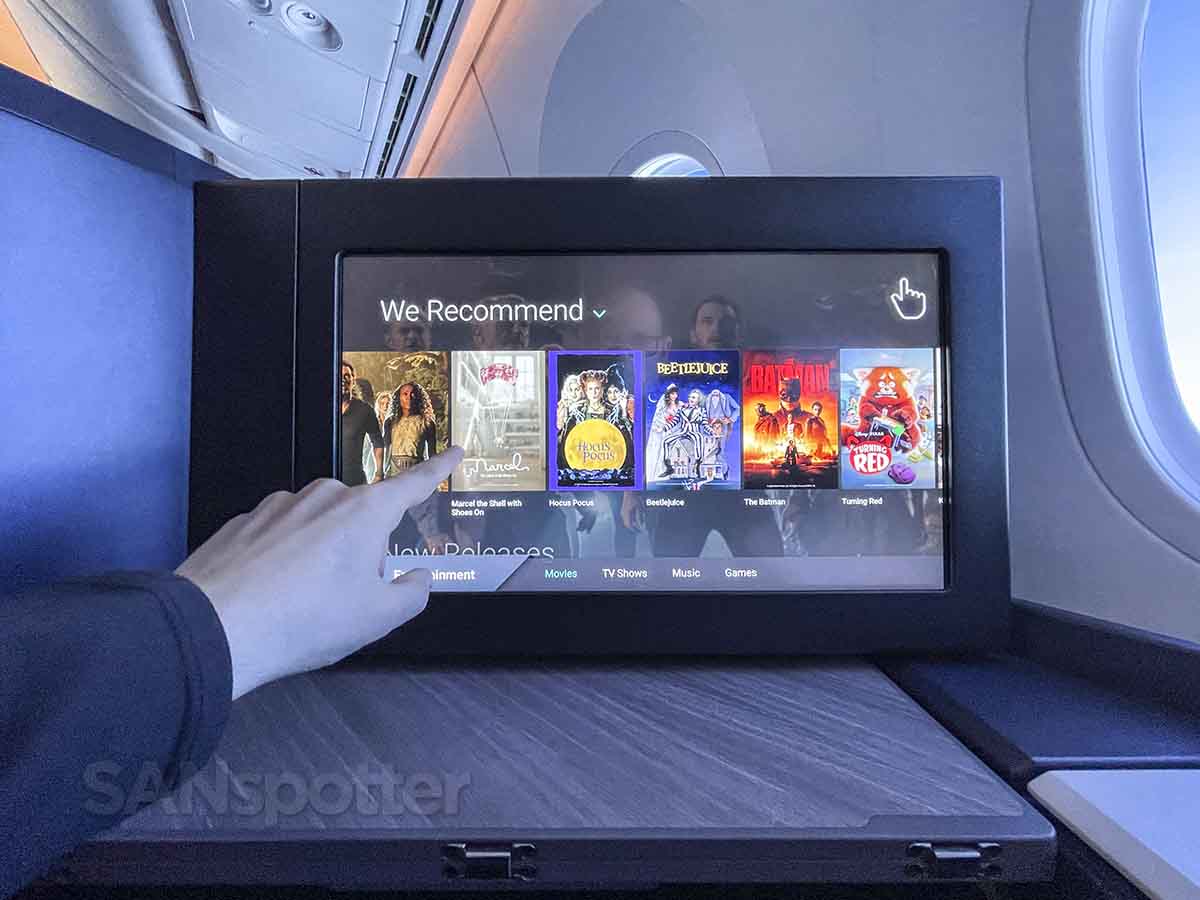
Air Canada in-flight entertainment
With partnerships with premium streaming services such as HBO, Crave, and Stingray, Air Canada offers the largest in-flight library of TV shows and movies in North America. That basically means they kick WestJet’s *** when it comes to onboard entertainment.
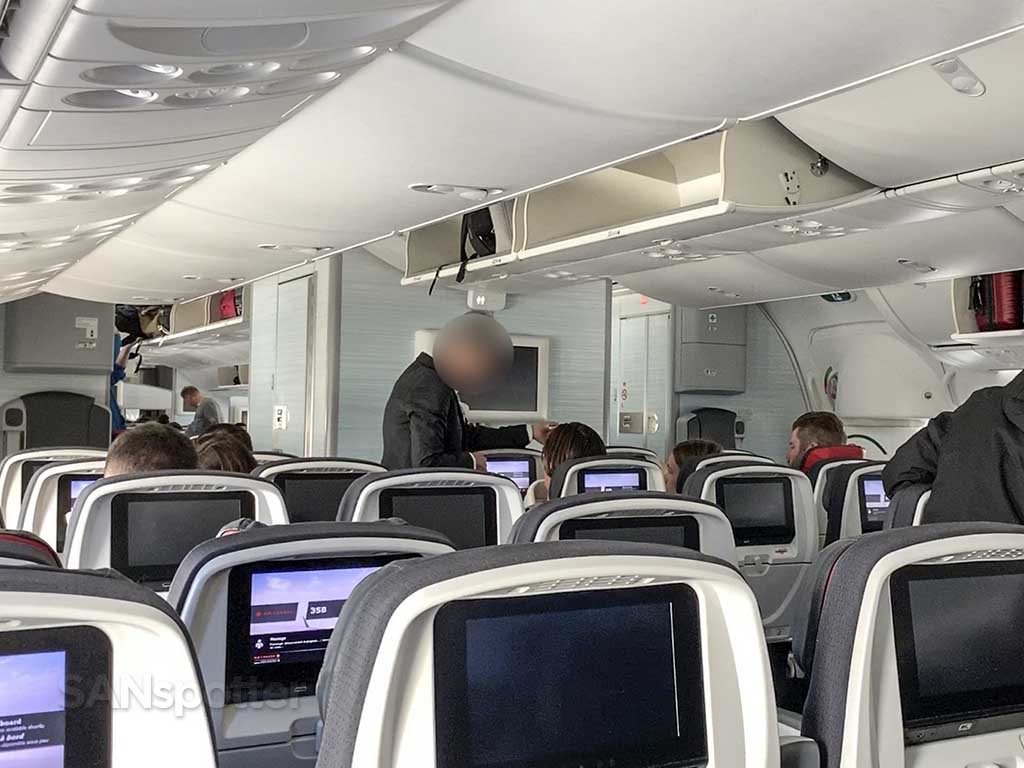
Unlike WestJet, there are video screens at every seat on nearly every aircraft in the fleet. They also offer a streaming entertainment option, which you can access via the Air Canada app on your personal device. WiFi is available on most aircraft.
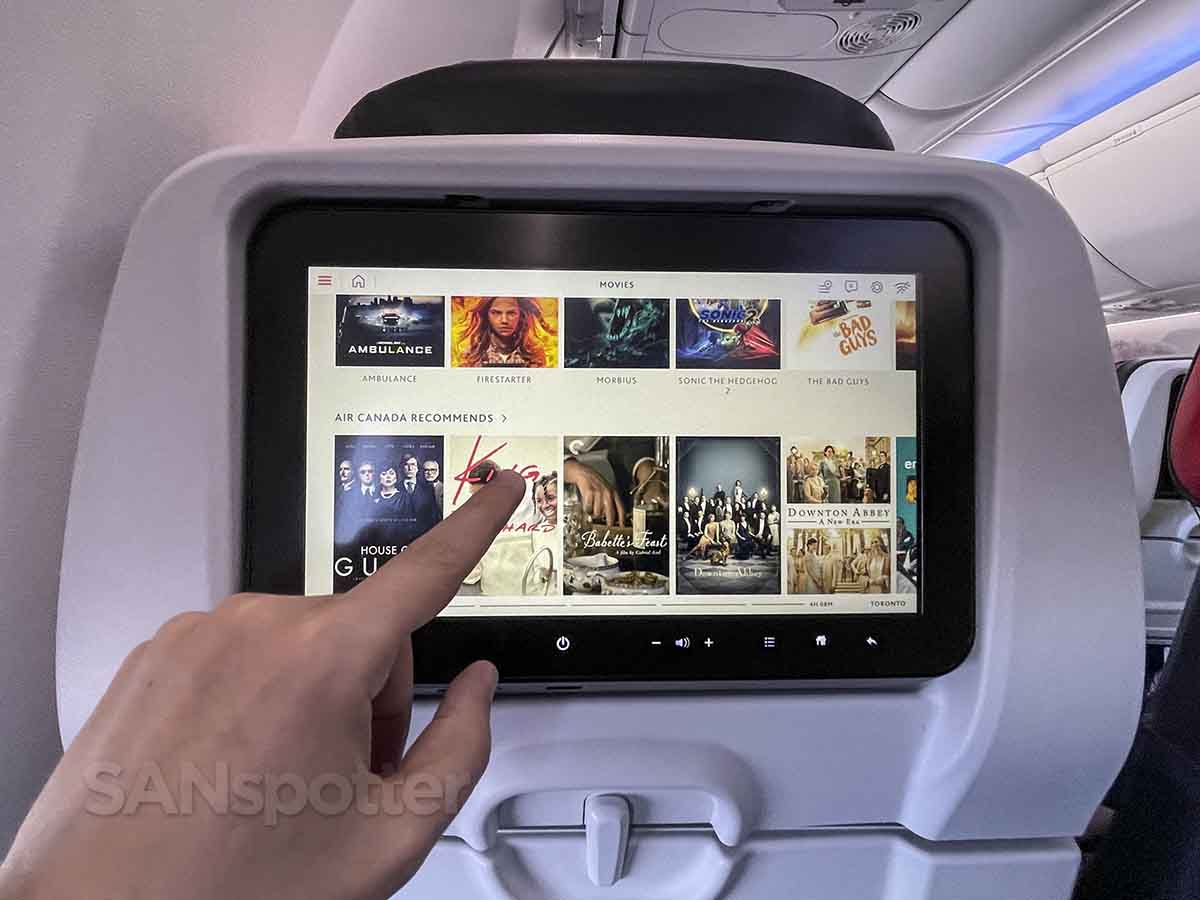
Comparing the WestJet and Air Canada frequent flyer programs
I’ll just come right out and say it: if you’re a hard-core frequent-flier junkie, Air Canada is going to be the better airline for you. The same applies if you’re a business traveler with the need for flexible reward program.
Here’s a brief explanation of how the WestJet and Air Canada frequent-flier programs compare:
WestJet Rewards
The WestJet frequent flyer program (WestJet Rewards) is a little different than the Air Canada frequent flyer program. Instead of earning points for flights, you earn “WestJet Dollars.” These are exactly what they sound like: dollars (money) that you can apply to future bookings.
WestJet Dollars are equivalent in value to Canadian currency, and they do not expire. The amount of Dollars you earn per flight depends on the value of your ticket. In other words, you’ll earn more rewards by spending more on your ticket.
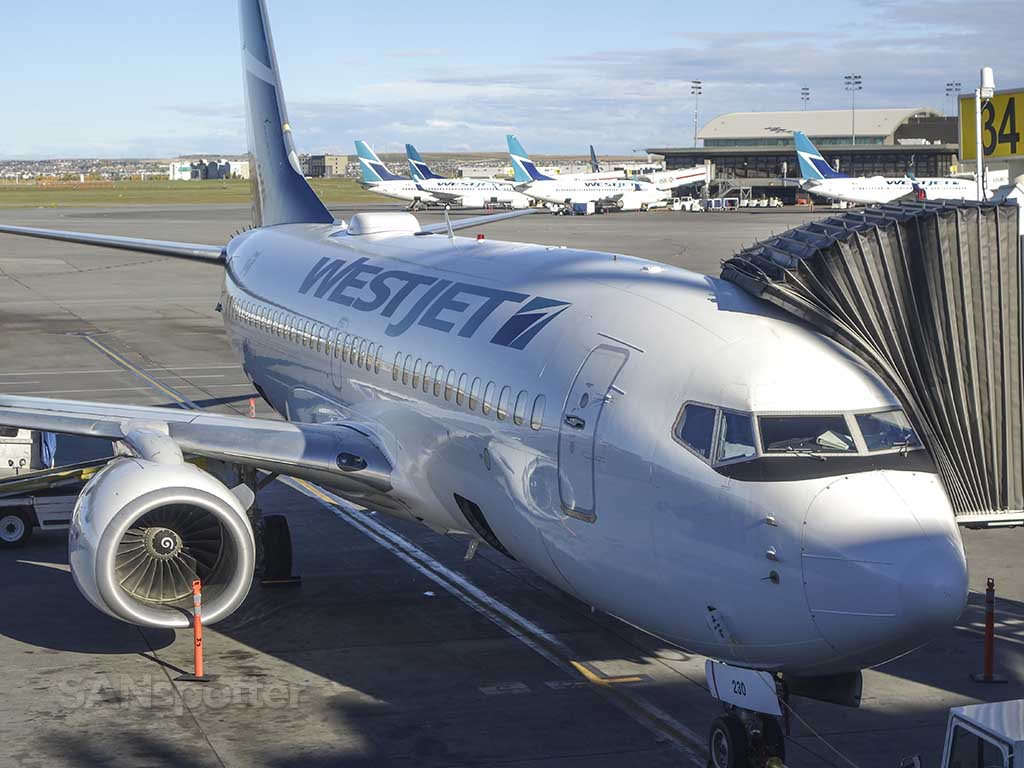
WestJet Rewards has several tiers, starting at Teal and moving to Silver, Gold, and Platinum membership. The benefits for these include free checked bags, better onboard meal options, access to priority boarding and airport lounges, and no black-out dates. Pretty much just like what you’ll get on Air Canada.
Air Canada Aeroplan
Just as it is with most major airlines these days, Air Canada’s frequent flyer program (Aeroplan) calculates your rank depending on how much you spend with them each year. If that isn’t frustrating enough, your points will expire after a year of inactivity.
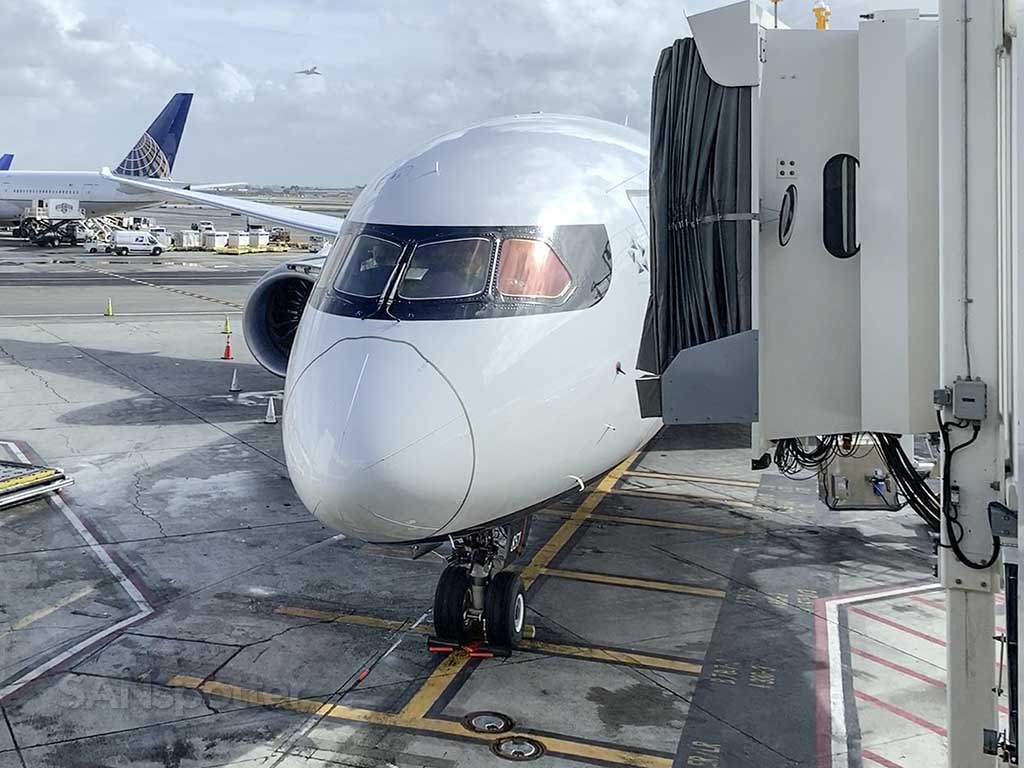
The three ranks for Air Canada Aeroplan are silver, black, and diamond. The more you fly, the more perks you get. These perks include no black-out periods, early boarding, and the ability to convert miles into points for use at major online shopping portals.
Although the perks you’ll get with each tier is similar to the perks you’ll get on WestJet, the “currency” you earn from flying is different. Air Canada gives you points. WestJet gives you literal currency.
The main benefit of the Air Canada frequent flyer program is that you can earn points by flying on other airlines in the Star Alliance network.
Comparing the route networks
Not too long ago, this route network overview is where this Air Canada vs WestJet comparison would’ve completely crumbled. Air Canada has always been a bigger airline than WestJet. They are a much larger company, they have a much larger global reach, and they serve far more destinations.
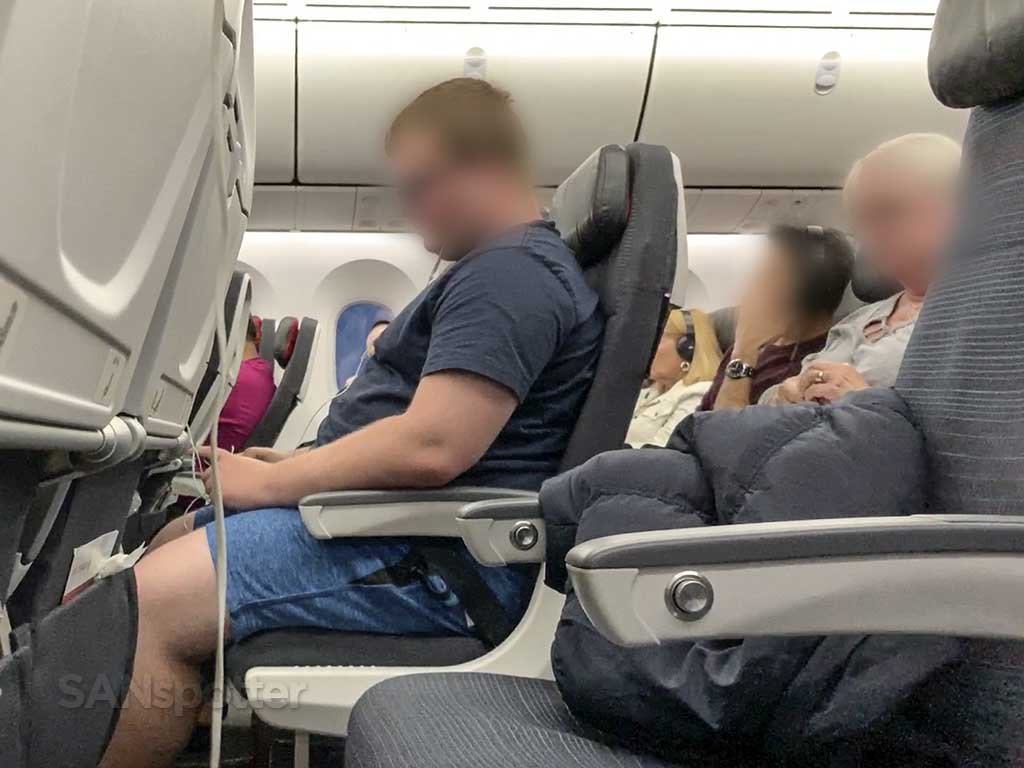
That being said, WestJet has been expanding like crazy recently, and they are quickly approaching “behemoth airline” status (and I’m willing to bet that if gives Air Canada board members heartburn like crazy).
WestJet route network
WestJet is a relatively new airline, having only been around since 1996. They don’t have a route network as extensive as Air Canada’s, but they do pretty well from just three main hubs:
- Calgary
- Toronto
- Vancouver
They fly to 67 cities outside of the country and 43 in Canada. And if their past is any indication of their future, I’d expect to see those numbers growing exponentially over the coming years.
Air Canada route network
When it comes to the route networks of Canadian airlines, Air Canada is the clear winner over WestJet. Air Canada’s primary hubs are:
- Toronto
- Montreal
- Calgary
- Vancouver
In addition to having one more hub than WestJet, Air Canada serves 64 countries. They serve over 150 locations outside of Canada and 60 within the country.
Why would you choose WestJet over Air Canada (or vice versa)
Choosing WestJet over Air Canada (or vice versa) ultimately come down to your personal preferences. Business travelers will be more likely to choose Air Canada due to their stronger route network and global access. If you’re primarily a domestic Canadian flyer, WestJet may be the only airline you’ll need.
Choose WestJet if:
- You are based in Calgary (or somewhere nearby). WestJet’s primary hub is in Calgary, and it’s a darn good one. It’s large, very well appointed, and you’ll be able to reach most of Canada on nonstop flights from there.
- You don’t fly internationally very often. WestJet is primarily a domestic Canadian airline, and a very good one at that.
- You want a more personalized experience. WestJet is a much smaller airline than Air Canada, and in my opinion, the onboard service has always been friendlier and more personal.
Choose Air Canada if:
- You need an airline that can take you not only all over Canada, but all over the world as well.
- You need an airline that is part of a major global airline alliance (which will allow you to earn points and status from flying on other international airlines).
- You need a airline with a more thorough domestic route network.
- You want a better international business class seat. WestJet international business class on their 787 is pretty good, but Air Canada’s is better.

